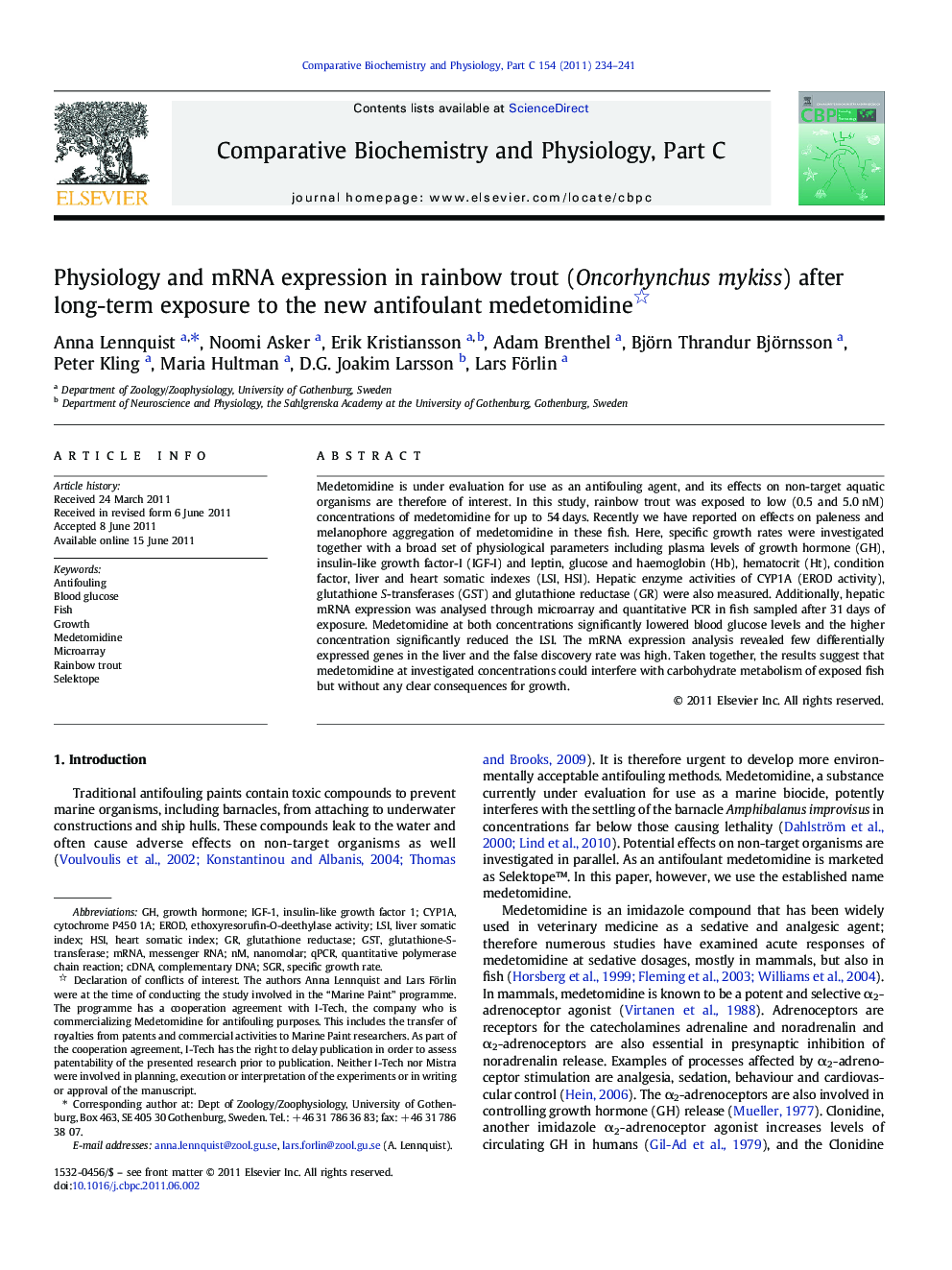| Article ID | Journal | Published Year | Pages | File Type |
|---|---|---|---|---|
| 10821760 | Comparative Biochemistry and Physiology Part C: Toxicology & Pharmacology | 2011 | 8 Pages |
Abstract
Medetomidine is under evaluation for use as an antifouling agent, and its effects on non-target aquatic organisms are therefore of interest. In this study, rainbow trout was exposed to low (0.5 and 5.0Â nM) concentrations of medetomidine for up to 54Â days. Recently we have reported on effects on paleness and melanophore aggregation of medetomidine in these fish. Here, specific growth rates were investigated together with a broad set of physiological parameters including plasma levels of growth hormone (GH), insulin-like growth factor-I (IGF-I) and leptin, glucose and haemoglobin (Hb), hematocrit (Ht), condition factor, liver and heart somatic indexes (LSI, HSI). Hepatic enzyme activities of CYP1A (EROD activity), glutathione S-transferases (GST) and glutathione reductase (GR) were also measured. Additionally, hepatic mRNA expression was analysed through microarray and quantitative PCR in fish sampled after 31Â days of exposure. Medetomidine at both concentrations significantly lowered blood glucose levels and the higher concentration significantly reduced the LSI. The mRNA expression analysis revealed few differentially expressed genes in the liver and the false discovery rate was high. Taken together, the results suggest that medetomidine at investigated concentrations could interfere with carbohydrate metabolism of exposed fish but without any clear consequences for growth.
Keywords
IGF-1CYP1ASGRERODHSIGSTLSImRNAqPCRcDNAComplementary DNAmessenger RNAGrowthMicroarraycytochrome P450 1aLiver somatic indexAntifoulinginsulin-like growth factor 1Rainbow troutFishMedetomidinenanomolarspecific growth rateGrowth hormonequantitative polymerase chain reactionglutathione-S-transferaseglutathione reductaseBlood glucose
Related Topics
Life Sciences
Biochemistry, Genetics and Molecular Biology
Biochemistry
Authors
Anna Lennquist, Noomi Asker, Erik Kristiansson, Adam Brenthel, Björn Thrandur Björnsson, Peter Kling, Maria Hultman, D.G. Joakim Larsson, Lars Förlin,
